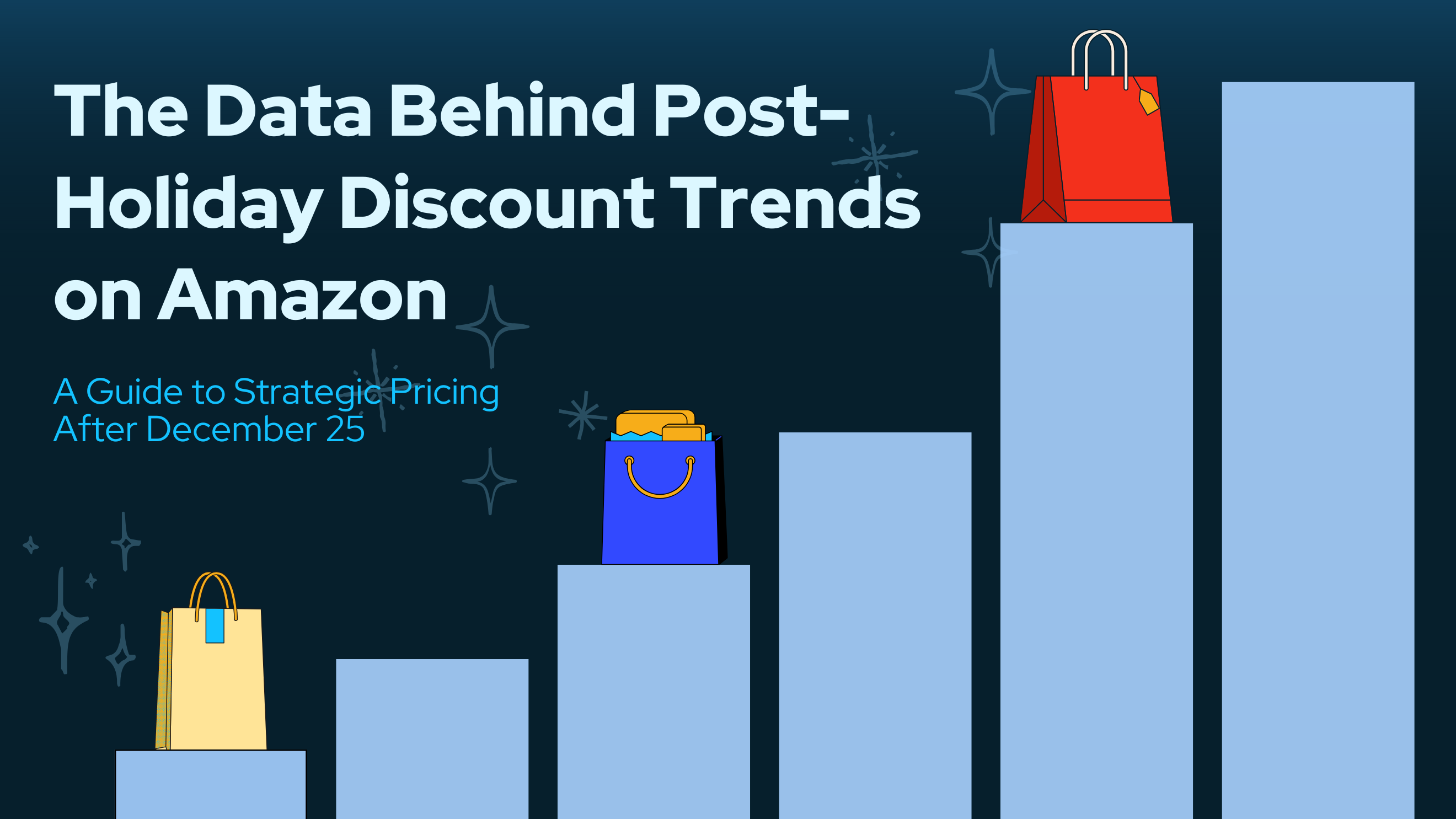A social marketing expert and "outside of the box" kind of thinker who loves brainstorm sessions on what makes a brand unique against competitors.
he Data Behind Post-Holiday Discount Trends on Amazon: A Look at Pricing Strategies After December 25

As the holiday season wraps up, consumers and sellers alike shift their attention to a post-Christmas retail phenomenon: the post-holiday discount period. For shoppers, this is the time to score deals on everything from electronics to apparel, while for sellers, it represents a critical phase to manage inventory and boost end-of-year revenue. On Amazon, where competition is fierce and pricing strategies are highly dynamic, the post-holiday discount period reveals fascinating trends and opportunities.
The Post-Holiday Sales Landscape
Immediately after December 25, Amazon sees a noticeable spike in discount activity. This is fueled by several factors:
- Inventory Clearance: Sellers aim to offload surplus stock from holiday overestimations.
- Gift Card Redemption: Amazon gift cards are a popular holiday gift, and recipients typically begin shopping right after Christmas.
- End-of-Year Revenue Push: Many sellers aim to maximize their fiscal year sales before the year closes.
Understanding the patterns behind these discounts can help brands better strategize their pricing and promotional campaigns to capitalize on post-holiday shopping behavior.
Key Trends in Post-Holiday Pricing Strategies
1. Dynamic Price Adjustments
Amazon’s algorithm-driven marketplace enables sellers to adjust prices quickly in response to demand and competitor actions. Post-holiday discounts tend to vary between 10% and 60%, depending on the category:
- Electronics: Moderate discounts (20-30%) to appeal to tech-savvy gift card users.
- Apparel and Accessories: Steeper cuts (30-50%) as sellers clear out seasonal collections.
- Toys and Games: Significant markdowns (40-60%) due to the holiday season’s heavy inventory buildup.
2. Flash Sales and Lightning Deals
Amazon sellers often use Lightning Deals or other time-limited promotions to create urgency. These short bursts of activity are especially effective for categories like electronics and home goods, where shoppers are on the lookout for specific items.
3. Bundles and Add-On Discounts
Another common strategy is bundling complementary products or offering add-on discounts. For instance, sellers might bundle a kitchen appliance with a related accessory or provide an additional 10% off for customers purchasing multiple items.
4. Consumer Behavior Insights
Data shows that shoppers with holiday gift cards often opt for practical items or upgrade purchases they held off on during the pre-holiday sales. Understanding these preferences enables sellers to adjust their product offerings and pricing strategies accordingly.
Data-Driven Insights for Sellers
Inventory Forecasting
Accurate inventory forecasting based on holiday sales data can help sellers strike the right balance between clearing stock and maintaining profit margins.
Competitive Pricing Analysis
Monitoring competitors’ pricing strategies post-holiday is crucial. Sellers who employ automated repricing tools often gain an edge by staying competitive while maximizing revenue.
Category-Specific Timing
Certain categories experience prolonged demand spikes post-December 25. For example, fitness equipment and health-related products often see higher sales in January as consumers embrace New Year’s resolutions.
Best Practices for Post-Holiday Success
- Leverage Data Analytics: Use historical sales data and trends to inform discount levels and promotional tactics.
- Optimize Listings: Refresh product descriptions and images to cater to post-holiday shoppers.
- Engage Customers: Highlight deals through email marketing, Amazon ads, and social media campaigns.
- Plan for Returns: Post-holiday returns are inevitable; plan accordingly to manage inventory and customer satisfaction.
Conclusion
The post-holiday discount period on Amazon is a critical window for sellers to optimize pricing strategies and boost revenue. By analyzing data trends and adopting tailored approaches, brands can not only clear excess inventory but also set the stage for a strong start to the new year. Whether through dynamic repricing, targeted promotions, or leveraging consumer behavior insights, strategic planning is the key to success in this competitive period.


